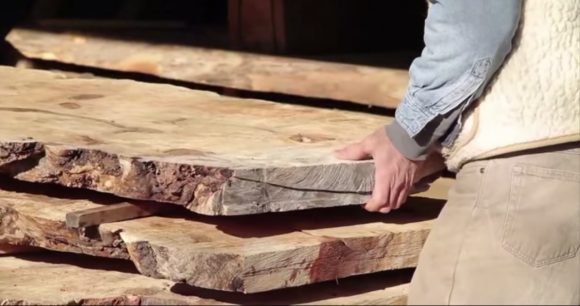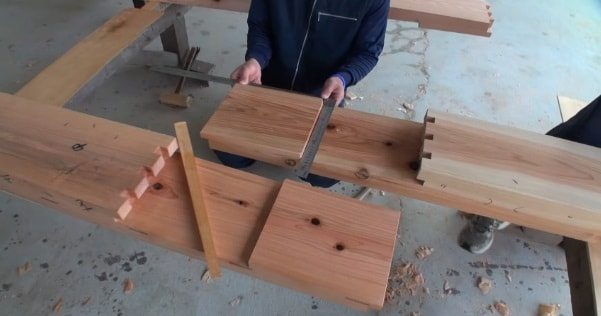Traditional Japanese carpentry known as Kanawatugi, is more than an ordinary skilled trade, it’s a scientific form of art. These wood working masters were able to create beautiful furniture, temples, and homes, without using a single nail or screw. Kanawatugi is indeed a very precise practice, the woodworker carves wood pieces to fit into each other like a 3D puzzle. Making this one of the most structurally sound styles of woodwork around the world.
 Hasao Hanafusa, a head carpenter at a New York shop called Miya Shoji, keeps this Japanese tradition alive and well. Hanafusa told rocketnews24 “Japanese carpentry isn’t about using nature to work for you when making products, but instead working with nature to accomplish your goal.” Kanawatugi carpenters follow through with that philosophy by keeping the natural curvature of the wood, or using the bottom of the tree for the bottom of the structure they’re building…
Hasao Hanafusa, a head carpenter at a New York shop called Miya Shoji, keeps this Japanese tradition alive and well. Hanafusa told rocketnews24 “Japanese carpentry isn’t about using nature to work for you when making products, but instead working with nature to accomplish your goal.” Kanawatugi carpenters follow through with that philosophy by keeping the natural curvature of the wood, or using the bottom of the tree for the bottom of the structure they’re building…
…because trees don’t grow upside down.
The Chinese have also used this practice a great deal, here is a video showing some of the history and philosophy behind this ancient tradition.
 Above is 10-20 year old wood being chosen for a new project
Above is 10-20 year old wood being chosen for a new project
Kanawatugi was a very carefully guarded secret of Japanese carpenter family guilds, though the cat eventually got let out of the bag, but it remains very difficult to comprehend and repeat. Western culture calls this practice wood joinery, there are few English DIY instructions when you type in Kanawatugi.
 Here is a link with some great GIF’s showing you how these wooden pieces join together. The young japanese man who designed these GIF’s made them because of the hardship he faced while learning how to do this trade. Aside from giving a good explanation of Kanawatugi, he commented on future applications of this type of joinery, saying it could be used for 3D printing and have practical implications in manufacturing and digital processing.
Here is a link with some great GIF’s showing you how these wooden pieces join together. The young japanese man who designed these GIF’s made them because of the hardship he faced while learning how to do this trade. Aside from giving a good explanation of Kanawatugi, he commented on future applications of this type of joinery, saying it could be used for 3D printing and have practical implications in manufacturing and digital processing.
 Get the audio set here on Amazon!
Get the audio set here on Amazon!
*All pictures were still shots taken from the two youtube videos in this article: video1 video2



